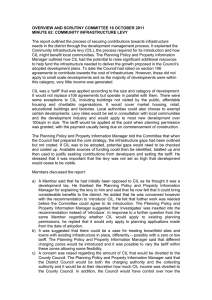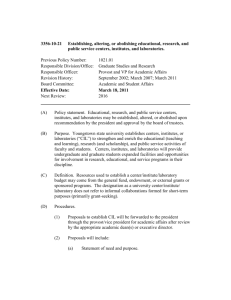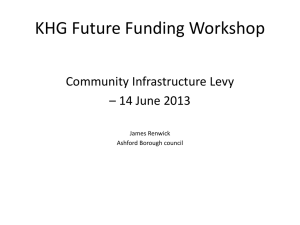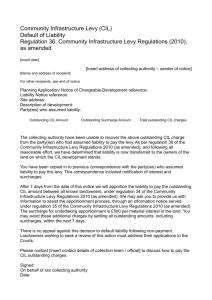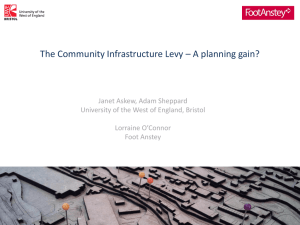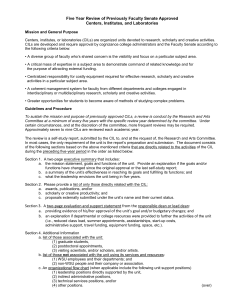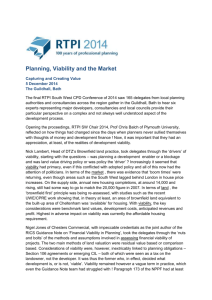CCN/DCN Seminar - Delivering CIL Efficiently in Two
advertisement
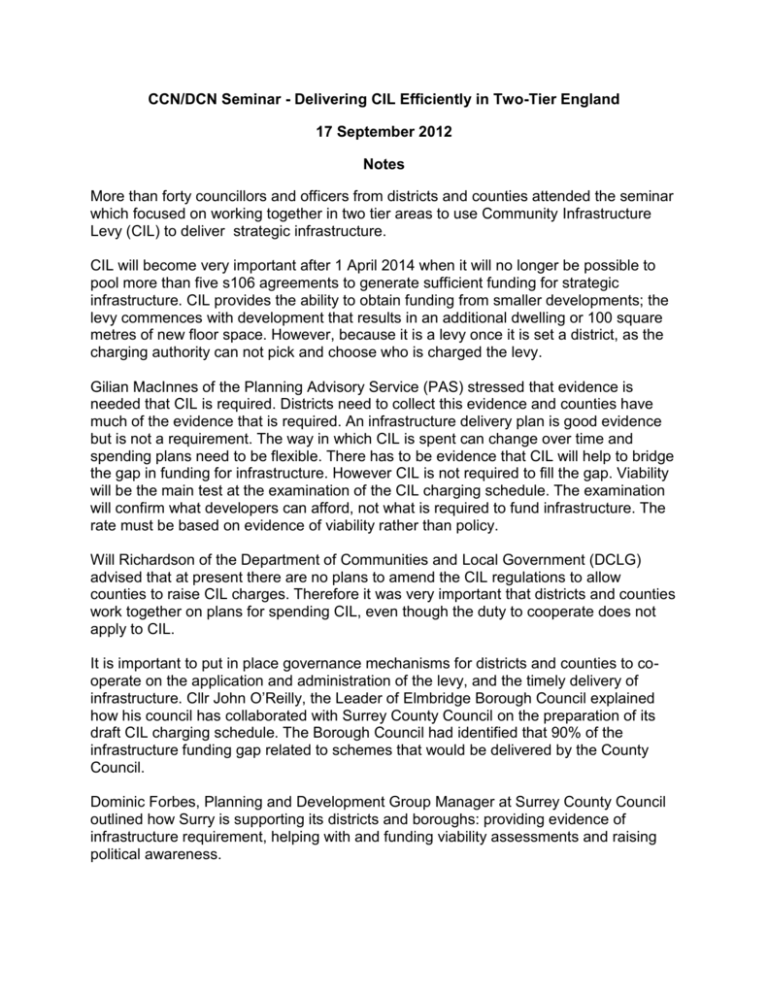
CCN/DCN Seminar - Delivering CIL Efficiently in Two-Tier England 17 September 2012 Notes More than forty councillors and officers from districts and counties attended the seminar which focused on working together in two tier areas to use Community Infrastructure Levy (CIL) to deliver strategic infrastructure. CIL will become very important after 1 April 2014 when it will no longer be possible to pool more than five s106 agreements to generate sufficient funding for strategic infrastructure. CIL provides the ability to obtain funding from smaller developments; the levy commences with development that results in an additional dwelling or 100 square metres of new floor space. However, because it is a levy once it is set a district, as the charging authority can not pick and choose who is charged the levy. Gilian MacInnes of the Planning Advisory Service (PAS) stressed that evidence is needed that CIL is required. Districts need to collect this evidence and counties have much of the evidence that is required. An infrastructure delivery plan is good evidence but is not a requirement. The way in which CIL is spent can change over time and spending plans need to be flexible. There has to be evidence that CIL will help to bridge the gap in funding for infrastructure. However CIL is not required to fill the gap. Viability will be the main test at the examination of the CIL charging schedule. The examination will confirm what developers can afford, not what is required to fund infrastructure. The rate must be based on evidence of viability rather than policy. Will Richardson of the Department of Communities and Local Government (DCLG) advised that at present there are no plans to amend the CIL regulations to allow counties to raise CIL charges. Therefore it was very important that districts and counties work together on plans for spending CIL, even though the duty to cooperate does not apply to CIL. It is important to put in place governance mechanisms for districts and counties to cooperate on the application and administration of the levy, and the timely delivery of infrastructure. Cllr John O’Reilly, the Leader of Elmbridge Borough Council explained how his council has collaborated with Surrey County Council on the preparation of its draft CIL charging schedule. The Borough Council had identified that 90% of the infrastructure funding gap related to schemes that would be delivered by the County Council. Dominic Forbes, Planning and Development Group Manager at Surrey County Council outlined how Surry is supporting its districts and boroughs: providing evidence of infrastructure requirement, helping with and funding viability assessments and raising political awareness. Marina Brigginshaw, Planning Policy Manager at Wealden District Council set out how the council had worked with East Sussex County Council and neighbouring local authorities to prepare its draft CIL charging schedule. The council now has a good understanding of what infrastructure is critical for growth. Ellen Reith of East Sussex County Council’s Infrastructure and Development Team explained how East Sussex had worked with Wealden to develop detail on infrastructure costs, timing and interdependencies. There was a joint viability assessment and a county wide sub-group is investigating options for collection and enforcement.




